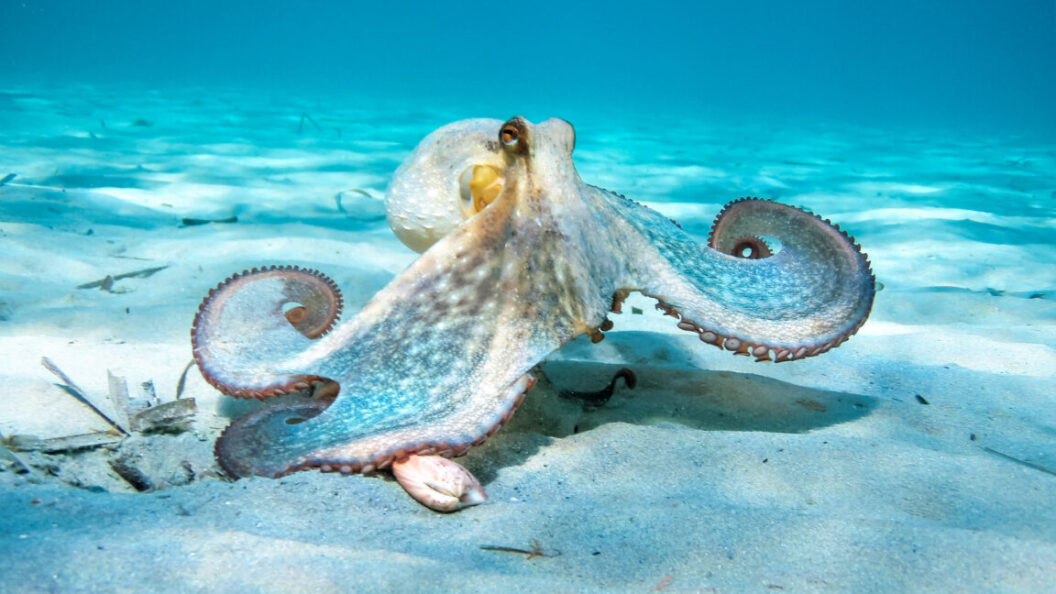The Remarkable Case of Salvador: An Octopus with Nine Arms
In a fascinating study, researchers from the Institute of Marine Research in Spain have documented an unusual case of a common octopus, Octopus vulgaris, that has adapted to life with nine arms instead of the typical eight. The octopus, nicknamed "Salvador" due to the unique shape of its bifurcated limb, serves as a testament to the adaptability of cephalopods in facing environmental challenges.
An Uncommon Injury and Its Consequences
In 2021, researchers used underwater cameras to observe Salvador, who suffered injuries to several of its arms, presumably from a predator encounter. While three of its limbs were intact, the others were stumpy and uneven. Notably, the front right arm—referred to as R1—was observed regenerating in a peculiar manner, splitting into two separate appendages.
Sam Soule, a leading researcher on the project, hypothesized that this abnormal regeneration could be attributed to a genetic mutation. "In this individual, we believe this condition was a result of abnormal regeneration after an encounter with a predator," Soule stated.
Behavioral Adaptations
Over the course of two years, researchers closely monitored Salvador’s behavior to understand how it coped with this unique condition. One of their key findings revealed that the octopus used its bifurcated arm less frequently during riskier activities, such as foraging for food or exploring its environment. This cautious approach likely stems from a long-term memory associated with the original injury.
Jorge Hernández Urcera, another lead author of the study, emphasized the significance of this behavior. “The octopus likely retains a long-term memory of the original injury, as it tends to use the bifurcated arms for less risky tasks compared to the others,” he explained. This observation pointed to an advanced form of memory that informs the animal’s actions and choices.
Adaptation of the Nervous System
Intriguingly, Salvador’s nervous system adapted to utilize the additional appendage over time. After a recovery period, Salvador was observed using its extra arm for environmental exploration. "That nine-armed octopus is a perfect example of just how adaptable these animals are," noted researcher Pelled. "Most animals would struggle with an unusual body part, but not the octopus. The nervous system didn’t treat it as a mistake—it figured out how to make it work."
Implications of the Findings
This study contributes to a growing body of knowledge about cephalopod intelligence and adaptability. The adaptability shown by Salvador offers insights into how animals can survive and even thrive despite physical anomalies. The findings of this research are not only significant for biology but also raise questions about the cognitive abilities of other species in similar circumstances.
Furthermore, the researchers drew a parallel between Salvador’s experience and Salvador Dali’s famous painting, The Persistence of Memory. The painting’s themes resonate with the octopus’s capacity to adapt and remember past experiences, leading to the title of the published study.
Conclusion: A Lesson in Resilience
Salvador’s case illustrates the remarkable resilience and adaptability inherent in octopus species. As these animals demonstrate the ability to compensate for injuries and modify their behavior accordingly, they challenge our understanding of intelligence and memory in the animal kingdom.
This unique story of an octopus with nine arms is not just a biological curiosity; it is a reflection on survival, adaptation, and the complex workings of the natural world. The research emphasizes the need for further exploration of how animals interact with their environments and adapt to challenges, potentially offering valuable lessons for ecological conservation and understanding animal behavior at a deeper level.









